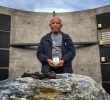The ARMM is a product of the 1996 Final Peace Agreement between the GRP and the MNLF.
The MNLF traces its origins to a massacre of between 28 to 64 Moro fighters recruited by the government in 1968 for a scheme to occupy Sabah, an island near Mindanao to which the Philippines has a historic claim.
Sabah ended up in the hands of the Malaysian government during the presidency of Diosdado Macapagal (1961-1965). His successor Ferdinand Marcos conceived a scheme involving the recruitment of Moro fighters to occupy the island.
The recruits were summarily executed by their military superiors in 1968, in what is now known as the infamous Jabidah Massacre.
The Jabidah Massacre triggered widespread outrage among the Moros and led to the formation of the MNLF that same year. The MNLF waged an armed revolutionary struggle against the GRP for an independent Muslim state in Mindanao.
The Marcos government, weighed down by the costs of the Mindanao war, negotiated for peace and signed an agreement with the MNLF in Tripoli, Libya in the mid-1970s. The pact involved the grant of autonomy to Mindanao Muslims.
The Marcos government insisted on a plebiscite to settle the coverage of the autonomous government that would be established. The MNLF refused to recognize the results of the plebiscite and peace negotiations bogged down.
GRP-MNLF peace negotiations went on and off until 1996, when the two parties signed a Final Peace Agreement.
In October 2001, hostilities broke out anew between the GRP and the MNLF. The military was in hot pursuit of Abu Sayyaf bandits who had abducted tourists in Sipadan, Malaysia. At one point, the military had announced the defeat of an �Abu Sayyaf� contingent in Talipao, Sulu.
The MNLF, however, said that it was its guerrillas, not Abu Sayyaf bandits, who were killed by the military.
The massacre in Talipao led the MNLF, just five years after signing a peace agreement with the government, to once more take up arms. Misuari, a former political science professor at the University of the Philippines (UP) who was then ARMM governor, said the Talipao Massacre was a �violation� of the 1996 Peace Agreement.
Misuari, who was then in Malaysia, ended up being arrested and subsequently detained in a military camp in Sta. Rosa, Laguna (38 kms south of Manila) and charged with rebellion. He is currently under house arrest in New Manila, Quezon City while still facing rebellion charges.
The waves of fighting have invariably been provoked by massacres of Moro civilians by soldiers, Jali said.
Tripartite meeting and massacres
Sulu made headlines earlier this year, when MNLF fighters led by Ustadz Habier Malik �detained� a group led by Muslim convert Marine Maj. Gen. Benjamin Dolorfino in Jolo, Sulu.
Dolorfino, who also uses the name Ben Muhammad, went with Undersecretary for Peace Ramon Santos and 13 others to the MNLF�s Camp Jabal Ubod in Panamao, Sulu in the morning of Feb. 2 to talk with MNLF representatives headed by Malik. The group included two colonels, a junior officer, nine enlisted men, and several members of Santos� staff.
The talks were to tackle the holding of a tripartite meeting, proposed late last year by the MNLF, with the GRP and the Organization of Islamic Conference (OIC). The tripartite meeting was to address issues related to the implementation of the Final Peace Agreement, and Malik�s group was protesting its repeated postponement by the GRP.
In the afternoon of that same day, Dolorfino and his group were prevented from leaving the camp, and were only released after agreeing with Malik and his men on a schedule for the tripartite meeting.
The tripartite meeting scheduled for March 17 this year was yet again postponed, and to make matters worse two grandsons of MNLF state chairman Khaid Ajibon were fired upon by soldiers while on an errand in the market of Indanan, Sulu on Feb. 17. This was followed by a bombardment of Ajibon�s headquarters, also in Indanan, and a massacre in Patikul.
The MNLF retaliated and in the renewed wave of fighting, more than 80,000 have been displaced.
Polls and peace
Asked what the next moves of Misuari and the MNLF would be, Jali said they would continue the campaign for Misuari�s release. �That is the priority of the MNLF and the Bangsamoro people,� he told Bulatlat.
The demand for Misuari�s release is among the issues that will be taken up in the tripartite meeting with the GRP and the MNLF, which Jali said had been scheduled on the second week of July. Bulatlat
2007 Elections, Poverty









